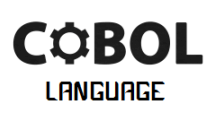What is the full form of COBOLCOBOL: Common Business-Oriented LanguageCOBOL stands for Common Business Oriented Language. COBOL is a high-level programming language designed for business applications. It is the second oldest programming language, as FORTRAN is the oldest. It was created jointly by the private sector and the U.S. government to fulfil two objectives: portability and readability. It was suitable for business applications that run on large computers. COBOL programs use the regular English language, and everything is clearly spelt out, which makes it easily understandable and much longer in comparison to the same program written in another language. 
HistoryCOBOL was invented in the late 1950s by Grace Hopper. Earlier each computer maker has to use its own programming language to function a computer. COBOL programs could run on more than one computer of different manufacturers and hence were immediately adopted by the Department of Defense (DoD) as they have to purchase computers from different buyers. Since 1960, it has undergone various updates and improvements. The American National Standards Institute (ANSI) has produced various revisions of COBOL, e.g., COBOL-68, COBOL-74, COBOL-85 and COBOL-2002. COBOL format is no longer being supported by new systems; hence, it is called Legacy Language. Financial firms and governmental organisations still often employ COBOL nowadays. Despite the fact that as those who learned COBOL when it was popular reach retirement age, the population of developers with COBOL expertise constantly declines, COBOL is once more being taught in several colleges to assist application modernisation as well as the DevOps trend. The need for COBOL programmers has grown, which has resulted in higher salaries and creative training opportunities. Through fellowships and training programmes, IBM has educated more than 150,000 developers on COBOL and mainframe capabilities over the last ten years. Although COBOL is still used by many organisations and training is increasing, the cumbersome text-based code and lack of skills are starting to be replaced or combined with more contemporary coding languages, such as Java, .NET, and C++. Due to the large volume of still-in-use code and the fact that these programmes are frequently run on outdated mainframes that are expensive and difficult to replace, this procedure can be tedious and expensive. In actuality, the cost, effort, and difficulty of rewriting initiatives on old COBOL systems cause up to 75% of them to fail. Characteristics
UsageCOBOL is mainly used in large organisations like the Military, Government, Large scale Businesses and in some Banks also in the USA. In the cloud COBOLThe cloud provides another platform for the quick deployment and modernisation of COBOL-written applications. Most COBOL systems can be easily and unchanged redeployed to a virtual or cloud environment since COBOL is both adaptable and extremely portable. This has been made feasible by the built-in flexibility of COBOL, as well as the dedication of leading industry suppliers like Micro Focus and IBM. The addition of even higher portability for application development, testing, and deployment across a hybrid I.T. setup is made possible by COBOL's support for containers. As of May 2019, COBOL was ranked twenty-fourth among the top fifty languages by the TIOBE Index, which measures the popularity of programming languages. Mission-critical services are supported by core business programmes, which are frequently built in COBOL for many international enterprises. The cloud provides another platform for the quick deployment and modernisation of COBOL-written applications. Most COBOL systems can be easily and unchanged redeployed to a virtual or cloud environment since COBOL is both adaptable and extremely portable. The addition of even higher portability for application development, testing, and deployment across a hybrid I.T. setup is made possible by COBOL's support for containers. As of 2019, a programme created in the late 1960s using conventional ANSI 68 COBOL might be redeployed to the cloud with no modification. But moving to the cloud might need a hefty infrastructure upgrade.
Next TopicFull Form
|
 For Videos Join Our Youtube Channel: Join Now
For Videos Join Our Youtube Channel: Join Now
Feedback
- Send your Feedback to [email protected]
Help Others, Please Share










